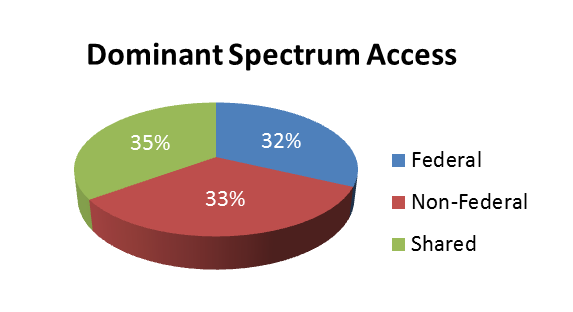Why Sharing is the Answer to Rising Demand for Spectrum
Last week, I spoke at the 5th Annual Americas Spectrum Management Conference in Washington, D.C. It was a valuable opportunity to talk about NTIA’s approach to spectrum policy and our efforts to meet the growing need for spectrum of both industry and federal agencies.
The wireless industry has fueled tremendous innovation and economic growth with its use of spectrum. To maintain the growth of wireless broadband services, industry requires more and more spectrum. At the same time, critical missions performed by federal agencies – from predicting deadly storms to exploring space -- are requiring systems of greater complexity. The result: There is more demand for this finite resource than ever before.
It is clear that we can’t meet the challenges that arise from this increased demand by using the traditional methods of spectrum reallocation, which often take too long and cost too much money. Innovation in spectrum use must be met with innovation in spectrum allocation. The answer is spectrum sharing, a flexible and evolving option that is helping to optimize this resource to the benefit of both the public and private sectors.
Sharing offers increased access to both federal and non-federal users. It’s also more flexible and efficient than the typical process of relocating federal operations. And it’s an improving science – researchers at the Center for Advanced Communications (CAC) in Boulder, Colo., are focused on cutting-edge spectrum sharing research and development, experimentation and testing.
At its core, however, spectrum sharing is nothing new. Business and government already share a large amount of spectrum today. Take the spectrum within the 225 MHz to 3700 MHz range, which has historically been viewed as the most valuable spectrum for commercial use. One of the myths that has entered the conversation around spectrum policy is that the federal government controls as much as 70 percent of that range. However, that figure fails to account for the significant number of shared frequencies that are assigned to both federal and non-federal users on a primary basis.
 If we take sharing into account by evaluating spectrum allocation based on dominant access – defined as spectrum designated for exclusive use or shared spectrum where one category of users has priority and interference protections (e.g., a shared band in which the federal government has a primary allocation and non-federal has a secondary allocation) -- we see a remarkable balance, with the federal government having dominant access to 32 percent of the 225-3700 MHz spectrum, non-federal users having dominant access to 33 percent, and the remaining 35 percent shared with equal priority among federal and non-federal users. Moreover, even when the government has dominant access, the vast majority of that spectrum is shared among multiple federal agencies.
If we take sharing into account by evaluating spectrum allocation based on dominant access – defined as spectrum designated for exclusive use or shared spectrum where one category of users has priority and interference protections (e.g., a shared band in which the federal government has a primary allocation and non-federal has a secondary allocation) -- we see a remarkable balance, with the federal government having dominant access to 32 percent of the 225-3700 MHz spectrum, non-federal users having dominant access to 33 percent, and the remaining 35 percent shared with equal priority among federal and non-federal users. Moreover, even when the government has dominant access, the vast majority of that spectrum is shared among multiple federal agencies.
Federal agencies and industry must continue to work collaboratively to ensure that all spectrum – federal and non-federal – is being used as efficiently as possible. At NTIA, we are committed to this task and are continuing with a busy agenda that includes important spectrum sharing research at CAC and NTIA’s Institute for Telecommunication Sciences (ITS), strong collaboration with the FCC and the federal agencies, as well as work with industry through the Commerce Spectrum Management Advisory Committee (CSMAC) to identify new spectrum sharing opportunities.
